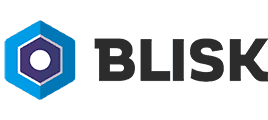Blisk is a specialized web browser that caters to the needs of web developers and designers. It stands out in the crowded browser landscape due to its unique features and capabilities tailored to streamline the development and testing processes. In this article, we will explore what Blisk is, its applications, and why using a proxy server with Blisk can be advantageous.
What is Blisk Used for and How Does it Work?
Blisk is primarily used by web developers and designers to enhance their workflow. It is designed to provide a seamless and efficient environment for creating and testing websites and web applications. Here are some key features of Blisk:
-
Simultaneous Device Emulation: Blisk allows developers to emulate multiple devices and screen sizes simultaneously, making it easier to ensure that a website is responsive and looks good on various platforms.
-
Live Preview: With its live preview feature, Blisk automatically refreshes the webpage whenever changes are made to the code, providing instant feedback during development.
-
Synchronized Testing: Blisk enables developers to synchronize actions across different devices. For example, clicking a link on one device will simultaneously trigger the same action on others, allowing for efficient cross-device testing.
-
Debugging Tools: Blisk comes equipped with powerful debugging tools that help identify and fix issues in real-time, reducing development time.
Why Do You Need a Proxy for Blisk?
Proxy servers play a crucial role in enhancing the capabilities of Blisk for web developers and designers. Here’s why you might need a proxy when using Blisk:
-
Geo-Located Testing: One of the primary reasons to use a proxy with Blisk is to perform geo-located testing. By routing your internet traffic through proxy servers located in different regions, you can ensure that your website or web application functions correctly for users worldwide.
-
IP Rotation: Proxies offer the ability to rotate IP addresses. This can be valuable for scenarios where you need to simulate different user locations or mask your identity during testing.
-
Access to Restricted Content: Proxies can grant access to content and websites that are restricted in certain regions. This is particularly useful when you need to test the availability and functionality of such content.
Advantages of Using a Proxy with Blisk
Using a proxy server with Blisk provides several advantages for web developers and designers:
1. Geographic Testing
| Advantage | Description |
|---|---|
| Geographic Diversity | Proxies allow you to test how your website or web app performs in different geographic locations. |
| Content Localization | You can assess how content and services appear to users in specific regions, ensuring a consistent user experience globally. |
2. Enhanced Security
| Advantage | Description |
|---|---|
| Anonymity | Proxies can anonymize your web traffic, protecting your identity and preventing websites from tracking your real IP address. |
| Security Testing | Proxies can be used to simulate various security scenarios, helping you identify vulnerabilities and weaknesses in your web applications. |
3. Content Accessibility
| Advantage | Description |
|---|---|
| Access to Restricted Content | Proxies can bypass geo-restrictions and access content and services not available in your location. |
| Website Compatibility | You can test how your website behaves when accessed from regions with different content restrictions. |
What Are the Сons of Using Free Proxies for Blisk
While free proxies may seem enticing, they come with significant drawbacks when used with Blisk:
-
Unreliable Performance: Free proxies often suffer from slow speeds and unreliable connections, which can hinder efficient development and testing.
-
Limited Locations: Free proxies typically offer a limited number of server locations, restricting your ability to perform comprehensive geo-located testing.
-
Security Risks: Using free proxies can expose you to security risks, as some may log your data or inject malicious scripts into your traffic.
What Are the Best Proxies for Blisk?
When choosing a proxy server for Blisk, consider premium proxy providers that offer the following features:
-
Large Server Network: Look for providers with a vast network of servers in multiple locations for extensive testing capabilities.
-
High-Speed Connections: Ensure that the proxy service offers fast and stable connections to minimize disruptions during development.
-
Security Measures: Opt for proxies that prioritize security, offering encryption and protection against malicious activities.
-
IP Rotation Options: Choose proxies that allow you to easily rotate IP addresses for varied testing scenarios.
How to Configure a Proxy Server for Blisk?
Configuring a proxy server for Blisk is a straightforward process. Follow these steps to get started:
-
Choose a Proxy Provider: Select a reputable proxy provider that meets your testing needs.
-
Obtain Proxy Credentials: Your proxy provider will provide you with credentials, including the proxy server’s IP address and port number.
-
Configure Blisk: Open Blisk and go to the settings menu. Find the proxy configuration section.
-
Enter Proxy Details: Enter the IP address and port number provided by your proxy provider. You may also need to enter a username and password if required.
-
Save Settings: Save your proxy settings, and Blisk will now route your internet traffic through the selected proxy server.
In conclusion, Blisk is a powerful tool for web developers and designers, and when combined with the right proxy server, it becomes even more versatile. Proxies enhance your ability to perform geographic testing, improve security, and access restricted content, making them an invaluable addition to your web development toolkit. When choosing a proxy for Blisk, prioritize reliability, speed, security, and flexibility to ensure a seamless testing experience.













